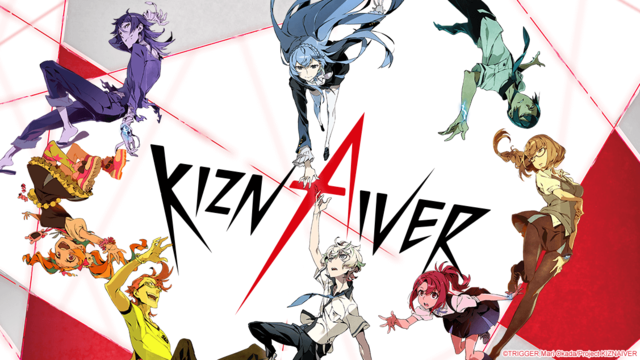Kiznaiver – Two Part Article: My Thoughts So Far + Episode 7 Review
Kiznaiver is a new anime in the Spring 2016 lineup, and I for one think it isn’t getting enough attention.
I didn’t pick up the show on it’s premiere, in fact I began watching it when there were already 4 episodes out, but after watching the first episode I didn’t stop until I was caught up. Kiznaiver is the kind of anime I think most anime fans can get behind, especially if you enjoy off-beat shows.
For those who haven’t watched it yet, Kiznaiver is produced by Trigger studios, who most notably brought us the sensational Kill La Kill in 2013.
To briefly summarize, Kiznaiver’s genres include sci-fi, drama, and psychological thriller. The story follows seven high school aged characters and several supporting characters in a story of personal growth, the importance of emotions, and relationships. The device for these values is a wacky concept that you’d only see in anime – each of the characters are ‘bound’ together by a scar on their hands due to an experimental surgery, and they each can feel another’s pain and emotions. Each character battles with their flaws, and begin to acknowledge their and other peoples emotions in ways the never did before, and grow as a result.
What I like about it:
I’m crazy about this series already, and it’s only 7 episodes in (so far). I have high expectations and hopes, and really believe the teams working on the script and animation will deliver – because the show has only gotten better with each episode. The ‘reality’ of Kiznaiver is what I relate to and enjoy watching it for. While fantastically impossible anime concepts are entertaining, the ones about human qualities and real life situations can be just as satisfying, if not more.
Kiznaiver expresses its narrative in a way that I find elegant as ever and never feels forced. To expand on the seven teenagers the plot follows, each is given an informal title by Noriko Sonozaki, a mysterious figure with some control over the project that bound the 7 of them together with a wound (making them Kiznaivers), each title is one of the 7 deadly sins in modern Japanese standards, but she does at times admit they aren’t really appropriate and just arbitrary. Getting to know each character happens naturally with each passing episode by seeing their interactions, outlining them all would be awesome! (But, that’s not on today’s menu!) so again, for those new to the series, we’ve got;
- a semi-emotionless absent minded one,

- a humanistic-noisy one,
- a cold tactician type,
- a rowdy-obnoxious one,
- an immoral (perverted) type,
- an attention seeking type,
- and the menacing and hostile at a glance one.
So it’s pretty obvious that Kiznaiver’s huge cast has a range of teenage emotions and motives flying around. Entertaining stuff! Watching this is almost like a drama, or soap opera, which I love. Each exchange between characters is reflective of their personality, and the fact that they are teenagers trying to figure out themselves and their emotions. What ensues are episodes where different characters attempt to cope with flaws, or better themselves, and because of the shared emotions and pain each member feels it becomes easier for them to do so because of said empathy. The frequent emotional themes create some entertaining and candid situations, like Chidori getting all tsundere around Kacchon, her childhood friend, and Honoka + Yuta getting to know each other during their camping trip. 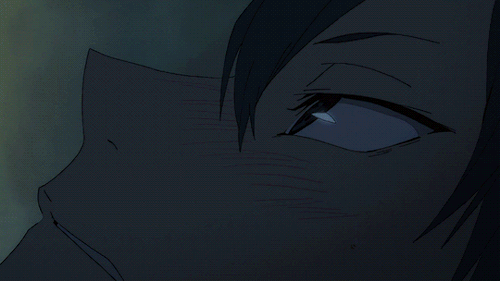
Relate-able characters, great use of imagery and realistic situations make Kiznaiver an excellent watch. I’m more than excited to churn out more articles about this series, in due time. But moving on with this two part article, my review of episode seven, which really captivated me.
For those who haven’t watched the series, spoilers for episode 7 ahead.
Episode 7: “A Battle Touching Upon the Identity of the Pain that’s Seven Times the Pain of One-Seventh of a Pain”
What a mouthful. Points for elegance awarded, bravo trigger. This episode came out dubbed via streaming websites like Crunchyroll on Friday (5/20/2016 ), as per usual of anime broadcasts.
This episode covers the emotional turmoils of Honoka Maki, the shrewd and reserved character who openly chooses to avoid being with the other Kiznaivers and reject their friendship. The very reason for her behavior is revealed in this heart wrenching episode, as we get an ironic spin on the cliche of a sad anime backstory. The aforementioned shared-emotion ability that the other Kiznaivers have is plaguing them while they feel Maki’s sadness, as she’s having a dour battle with depression and guilt from the death of her once best friend, whom she believes she’s let down in some way.
The talent of the writing team lead by the impressive Mari Okada really shows in situations like this, where the viewer is faced with an all too real set of emotions conveyed through anime. Watching Maki have episodes of trauma and flashbacks of times spent with Ruru, her terminally ill friend, really shook me. Maki and Ruru were both reclusive, and when they came to befriend each other it was because they both were creating manga in their spare time; which I thought was a great creative liberty on behalf of the writers. The use of the manga-anime parallel was clever and oh so satisfying to watch, the irony being that the *viewer* is watching anime characters re-enact a love scene that they created within a manga. Wrap your head around that, if you please. 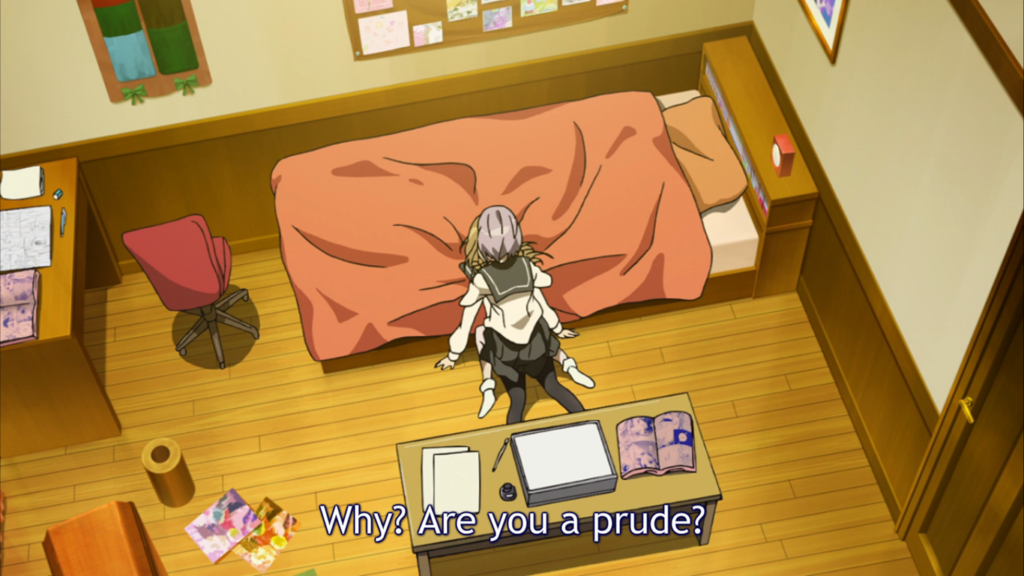
Normally when I see an anime love encounter with two female protagonists its a fan service-y time for laughs and ogling, but this one was much different. What stood out the most to me was the awkwardness of the whole encounter. The way Maki became uncomfortable and unable to even act after Ruru thrust herself upon her ready to make a move was as natural as a response you’d expect two adolescent girls to actually have, no cliche anime tropes to be had. After the advance, their relationship just isn’t the same. They come together for the final time to work on their manga, but Maki declares she can no longer work with her or even be her friend after how confused she felt. Ruru curses Maki with her words, saying that she’ll be doomed to love her forever and never escape, and even alludes to including that into the end of their manga, yet again paralleling their lives.
The final emotional nail in the coffin comes from the last of Maki’s flashbacks, she’s walking alone, and in the distance we see smoke rising from a home, as she carries a red umbrella: to me, this symbolized that Maki is now truly alone, and Ruru has either just died of natural causes or committed suicide, the weight of her death rests on Maki’s shoulders. There is redemption for Maki, though. Her Kiznaiver ‘friends’ try their best to cheer her up with fireworks on the beach, and Yuta even goes so far as to reach out to her alone in a storm and offer her the final chapter of the manga she co-wrote, which she never read due to guilt. Maki begins to realize living in guilt might just be futile, and that she can actually learn to move forward and trust others. She facetiously tells all her friends to go run into the ocean if they want to cheer her up, and to her surprise, they actually do.
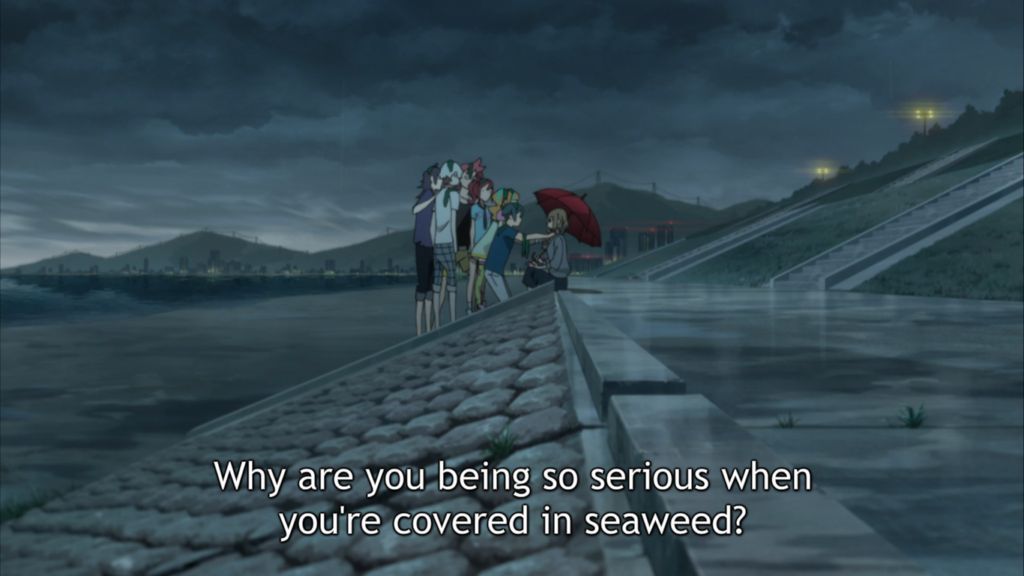
Next comes a beautiful piece of imagery; Maki walks out onto the beach with the rest of her Kiznaivers, drops her red umbrella and lets the rain fall upon her. To me, this meant she’s finally let Ruru’s death off her shoulders, and that she can finally rest and live peacefully with her past. Before the episode ends, Maki utters a few words quietly with her face up to the rain, “Ruru… Me too.” which is in response to some of the last words she heard from Ruru in the form of their manga’s final chapter – that she loved her smile.
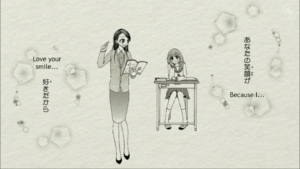

Emotional turmoil aside, there was one more aspect of this episode that intrigued me. Nori, the mysterious go-between of the Kiznaivers and the organizers of the project, is seen at her desk thinking about Kacchon and how he’d changed emotionally, after he stood up to her behavior a few episodes ago. The scene was brief, but she glances at a photograph on her desk, then turns it face down.
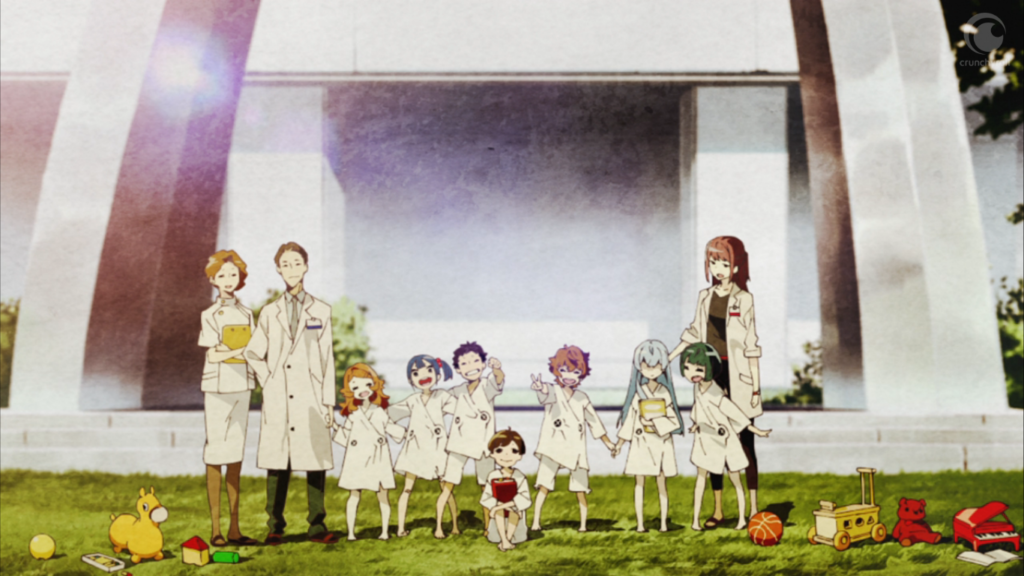
What can clearly be seen from this is that Kacchon (red haired boy making peace sign) and Nori are holding hands, surrounded by another five children and some scientists. My suspicious is they all were part of a Kiznaiver experiment in their childhood. The first episodes first scene alludes to this, but this photograph adds much more to that theory.
Kiznaiver is already full of twists, turns, and emotion, and it’s only seven episodes in so far. I’m practically on the edge of my seat waiting for Friday to see what may happen next in this series, and sure as hell will be sharing my opinions on it.

